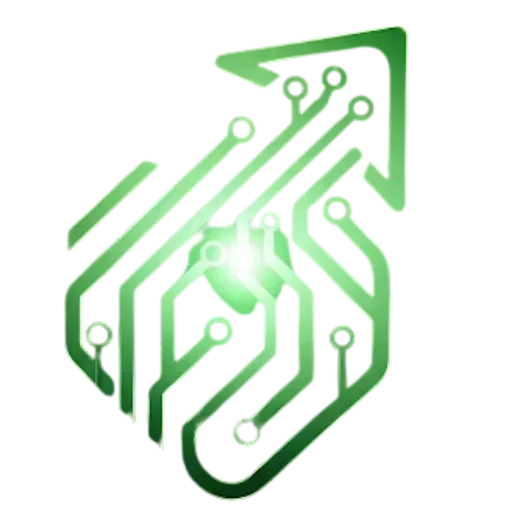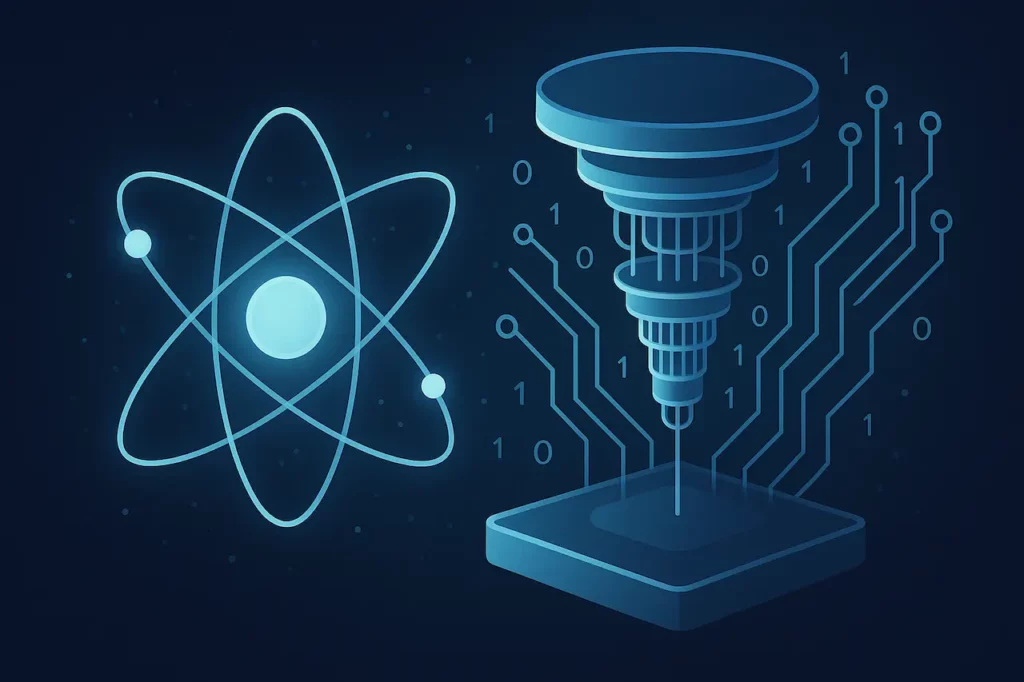
Best video cards and PC specs for 4K gaming
Keen to unlock true 4K gaming performance? Discover which video cards and PC specs deliver stunning visuals—your ultimate setup awaits just ahead.

You might have heard about quantum computing and its potential to change the tech landscape. At its core, quantum computing leverages the principles of quantum mechanics to process information in ways classical computers can’t. By using qubits instead of traditional bits, these machines can tackle complex problems much more efficiently. Curious about how this technology works and what it could mean for the future? Let’s explore the fascinating world of quantum computing together.

Quantum computing is an advanced form of computing that harnesses the principles of quantum mechanics to process information in ways classical computers can’t.
By using quantum bits, or qubits, it represents data in multiple states at once, significantly speeding up calculations.
Understanding its history and evolution helps you appreciate its potential to transform various industries.
When you think about computing, you might picture traditional computers that process information in a straightforward manner using bits that are either 0 or 1.
But what’s quantum computing? It’s an advanced form of computing that harnesses the principles of quantum mechanics. Instead of bits, quantum computers use qubits, which can represent both 0 and 1 at the same time thanks to a property called superposition. This allows for the exploration of multiple solutions simultaneously.
Additionally, qubits can be entangled, meaning the state of one qubit can influence another instantly, enhancing computational power. By leveraging these unique features, quantum computing has the potential to solve complex problems much faster than classical computers ever could.
The journey of quantum computing began in the 1980s when researchers started to explore how the principles of quantum mechanics could revolutionize computation.
Pioneers like Richard Feynman and David Deutsch laid the groundwork, proposing that quantum systems could perform calculations beyond classical computers.
In the 1990s, the introduction of quantum algorithms, such as Shor’s algorithm for factoring, showcased the potential of quantum speed-ups.
Fast forward to the 2000s, and major tech companies like IBM and Google began investing heavily in developing quantum hardware.
Today, you’re witnessing rapid advancements in quantum technology, with ongoing research addressing challenges like error rates and coherence.
As the field evolves, quantum computing promises to tackle complex problems that classical computers can’t efficiently solve.
In understanding quantum computing, you’ll encounter key principles like superposition and entanglement that set it apart from classical computing.
Superposition lets qubits represent multiple states at once, while entanglement creates a link between qubits that enhances their processing power.
However, challenges like quantum decoherence and the need for error correction also play a crucial role in this fascinating field.
Superposition is a fundamental principle of quantum computing that empowers qubits to exist in multiple states at once, unlike classical bits that are strictly 0 or 1.
This unique ability allows a single qubit to represent both 0 and 1 simultaneously, creating a vast space of possible configurations. When you harness superposition, you enable quantum computers to explore countless solutions to complex problems at the same time.
Imagine trying to find the best route for delivery trucks: while a classical computer checks each option one by one, a quantum computer can evaluate many routes concurrently.
This parallelism is what makes quantum computing so powerful, potentially revolutionizing fields like optimization, cryptography, and simulations.
While superposition allows qubits to exist in multiple states, entanglement connects them in such a way that the state of one qubit instantaneously influences another, no matter the distance between them.
This unique property means that when you change the state of one entangled qubit, the other qubit adjusts accordingly, creating a powerful link between them. It’s like having a pair of dice that always show the same number, regardless of where they’re rolled.
This connection enhances computational power, allowing quantum computers to perform complex calculations more efficiently than classical computers.
Quantum decoherence occurs when a quantum system loses its quantum behavior, transitioning into classical states due to interactions with the environment. This process happens when qubits interact with their surroundings, causing them to behave more like classical bits.
Essentially, decoherence disrupts the delicate superposition and entanglement that make quantum computing powerful. As a result, the system loses its ability to perform complex calculations efficiently. You can think of decoherence as the “noise” that interferes with the clear signals needed for quantum computations.
To maintain a functioning quantum computer, researchers need to minimize decoherence and protect qubits from environmental disturbances. Understanding and addressing decoherence is crucial for advancing quantum technology and achieving reliable computations.
Error correction is essential in quantum computing, as it helps maintain the integrity of qubits during computations. Unlike classical bits, qubits are delicate and susceptible to errors from environmental noise and decoherence.
To combat this, quantum error correction employs various techniques, such as encoding logical qubits into multiple physical qubits. This way, if one qubit fails, the information can still be retrieved from the others. You might think of it like a safety net that ensures your computations remain accurate.
While developing robust error correction methods is challenging, achieving reliable quantum computing hinges on these advancements. Without effective error correction, the potential of quantum computers to solve complex problems would remain unrealized.
When you explore how quantum computers work, you’ll notice that they use quantum bits, or qubits, which can represent multiple states at once, unlike classical bits.
Quantum gates and circuits manipulate these qubits to perform calculations in ways that traditional computers can’t match.
Understanding quantum algorithms will further reveal how these systems tackle complex problems efficiently.
While classical bits serve as the foundation of traditional computing, representing information as either a 0 or a 1, qubits introduce a revolutionary approach by allowing information to exist in multiple states simultaneously. This unique characteristic, known as superposition, enables qubits to perform complex calculations much faster than classical bits.
Additionally, qubits can be entangled, meaning the state of one qubit can influence another, even at a distance. This interconnectedness enhances the computational power of quantum systems, allowing them to tackle problems that are currently infeasible for classical computers.
Quantum gates and circuits form the backbone of quantum computing, allowing qubits to be manipulated and processed in a way that harnesses their unique properties.
Just like classical logic gates process bits, quantum gates perform operations on qubits, changing their states through superposition and entanglement. By arranging these gates into circuits, you can create complex quantum algorithms that solve problems more efficiently than classical methods.
Each quantum gate affects qubits’ probabilities, leading to different outcomes that can be measured. This ability to process multiple possibilities simultaneously gives quantum circuits their power.
Understanding how these gates and circuits work is essential for grasping the potential of quantum computing in tackling challenges that are currently beyond reach.
Understanding quantum algorithms is crucial for harnessing the full potential of quantum computing. These algorithms leverage the unique properties of qubits, such as superposition and entanglement, to solve problems more efficiently than classical algorithms.
For instance, Shor’s algorithm can factor large numbers exponentially faster than any classical method, which has significant implications for cryptography. Grover’s algorithm, on the other hand, provides a way to search unsorted databases in a fraction of the time required by classical algorithms.
In the realm of quantum computing, various technologies have emerged, each with unique methodologies and applications. You’ve likely heard about quantum annealing, which focuses on solving optimization problems by finding the lowest energy state.
Then there’s gate-based quantum computing, where quantum gates manipulate qubits much like classical logic gates. This approach supports more complex algorithms.
Another exciting area is topological quantum computing, aiming to create qubits that are less susceptible to errors.
Finally, there’s photonic quantum computing, which uses light particles to perform computations, offering potential advantages in speed and scalability.
Understanding these technologies helps you grasp how quantum computing could revolutionize industries and tackle complex challenges.
In summary, quantum computing is a groundbreaking technology that leverages the principles of quantum mechanics to tackle complex problems more efficiently than classical computers. By understanding superposition and entanglement, you can appreciate how qubits operate in ways that traditional bits can’t. As this technology continues to evolve, it holds the potential to revolutionize industries, from logistics to cryptography. Embracing quantum computing could lead to innovative solutions that were once thought impossible, shaping the future of technology.

Keen to unlock true 4K gaming performance? Discover which video cards and PC specs deliver stunning visuals—your ultimate setup awaits just ahead.

Before buying a new video card, discover the crucial steps to ensure compatibility with your motherboard—one mistake could cost you.

Curious why gaming graphics cards cost so much? Complex tech and market twists mean there’s more behind the price than you might think.

On the fence about upgrading your gaming laptop's graphics card? Discover what's truly possible before you make your next move.

Considering a hardware upgrade? Check out which PC brands make swapping components a breeze—and discover the standout choice you might not expect.

Discover the top three warning signs your computer may be infected with malware, and see if your device is secretly at risk.